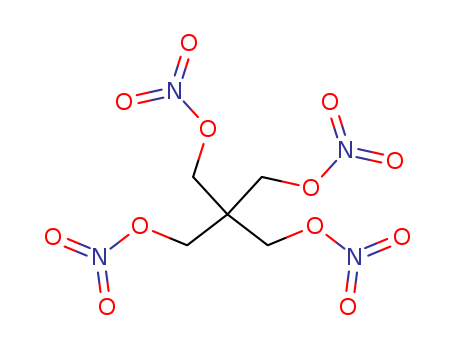- Chemical Name:Pentaerythritol tetranitrate
- CAS No.:78-11-5
- Deprecated CAS:103842-90-6,108736-71-6,53025-84-6,108736-71-6,53025-84-6
- Molecular Formula:C5H8N4O12
- Molecular Weight:316.138
- Hs Code.:2905.50
- European Community (EC) Number:201-084-3,933-854-6,942-390-3
- ICSC Number:1576
- UN Number:0411,0150,3344
- UNII:10L39TRG1Z
- DSSTox Substance ID:DTXSID2023430
- Wikipedia:Pentaerythritol_tetranitrate
- Wikidata:Q189334
- NCI Thesaurus Code:C47660
- Metabolomics Workbench ID:53988
- ChEMBL ID:CHEMBL466659
- Mol file:78-11-5.mol
Synonyms:Dilcoran;Erinit;Nirason;Nitrodex;Pentaerythritol Tetranitrate;Pentalog;Peritrate;Tetranitrate, Pentaerythritol;Tetrate




 E
E


